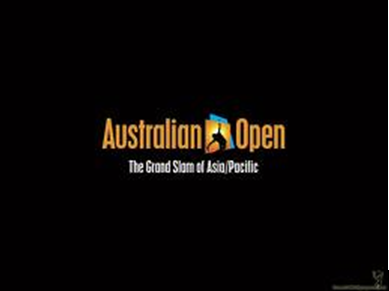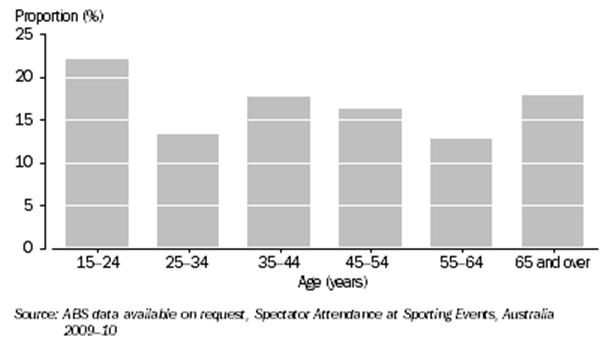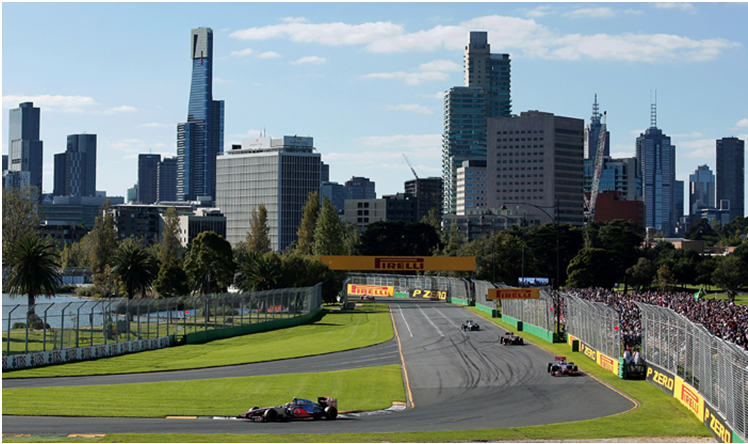Executive Summary
The benefits of tourism can only be sustained if efforts are put in place to manage the environmental aspects that are involved. Several annual sporting events are held in Australia which attract huge numbers of tourists, both from international circles and locally, to witness the events.
Sustainability programmes are required to be implemented in order to take good care of the welfare of these events and their fans in the future. This will also ensure safety and security for the players who participate in the events. Sustainability measures in this regard include programmes aimed at mitigating on the effects of environmental pollution and degradation, which mainly increase during the event duration.
Fans living within cities where these events are hosted travel to and from event venues using aircrafts, trains, vehicles, and motorcycles, all of which pollute the air through the emission of carbon dioxide. Increased volumes of waste dumping are also witnessed during such events, which is also hazardous to the environment.
Examples of such sporting events with huge interest and following from the world include the Australian Open tennis championships held in Melbourne, and the Australian Grand Prix Formula One championships held at the Albert Park, also in Melbourne.
The respective event organisers should introduce programs which address these effects, like devising alternative transport ways that will have limited effects. Other pollution effects caused by noise and waste material, including waste bottles, also need to be properly managed.
Policy Planning for a Sustainable Tourism and Hospitality Industry
There have been concerted efforts in the recent past for proper management of the environment which supports mankind’s daily life and activities. Efforts have also been put into place to create public awareness on the significance of understanding and incorporating sustainability measures in order to limit on the effects of environmental degradation.
Big international sporting events have particularly been the focus of these efforts as they generate significant amounts of waste, both solid and gaseous, which are potentially harmful to the event goers and the communities living around event venues. This paper makes reference to two major sporting events which grace the international calendar, and which are both hosted in Australia.
The Australian Open Tennis Championship which is held every year in the month of January at the Melbourne Park in Australia, and the Australian Grand Prix Formula One Championships which are also held in Melbourne at the Albert Park during the month of March.
Sustainability
Sustainability refers to the adoption of strategies as well as activities which target to fulfill the enterprise’s need effectively, together with that of its stakeholders. The sustainability further protects and enhances natural and human resources needed in the future, to further maintain the resources even into the future. Part of the sustainability effort in as far as the tennis competition is involved includes managing the environment such that aspects like water, air pollution, and waste management can be catered for effectively.
The Australian Open Tennis Championship
The Australian Open tennis championship is an annual event that is hosted at the Melbourne Park in Australia during the month of January. The event is listed among the four Grand Slam events of the sport, and it brings together hundreds of leading global tennis personalities and tens of thousands of tennis fans from around the world.

As one of the leading Grand Slams event in the whole world, the Australian Open is the second biggest in magnitude after the US Open. Given its global magnitude, the event has a huge impact in terms of financial contribution to the Australian economy, as well as other social and cultural impacts.
Environmental Sustainability
Water
There are several environmental effects that result from the Australian Open event. More regions in Australia are continuously experiencing drought situations mainly due to the irregular climate changes and the increasing population size in the country.
In pursuing to conserve water, efforts should also be harnessed to address the resultant climate change impact that occur as a result of the pumping, treatment of the water, as well as delivery of the water for consumption purposes. These activities require a considerable amount of energy which in turn also emits greenhouse gas, GHG. To address some of the raised issues, the organisers of the Australian Open Tennis competition need to recognise how critical water is in the initial planning stages of the tournament.
Two big drains of storm water run underneath the Melbourne Park. Underground tanks have been installed to tap into this source to harvest water for use at the premises. Rainwater is harvested for consumption on the site with the possibility of netting in a total of 23 mega litres from the entire rooftop area and space covering the facilities.
The venue has been fitted with waterless urinals, low flow toilets, and flow showerheads as an effort to conserve water. Temporary sinks in bathroom stalls are supposed to be equipped with push buttons in order to minimise water leakage. Event sponsors and vendors constructing water features like ponds and fountains in their displays are required to buy recycled water from a local company dealing in recycled water.
All aboveground sprinklers at the park have retrofitted underground irrigation system to reduce consumption of water and evaporation related losses. Plexicushion Prestige System has been used to replace the Rebound Ace surface on all the courts since 2008. This minimises water used to maintain the surface due to its property of retaining less heat.
Waste
The event organisers have teamed up with other partners, Melbourne and Olympic Parks Trust, MOPT, and Delaware North Australia, among others to operate a recycling system for all the waste bottles realised. The latest waste recycling practices are being used in order to limit the negative implications of the waste recycling process impacting on the environment. The event organisers, sponsors and other partners have implemented waste recycling that intends to clean products which are non toxic as well as those that are biodegradable.
Air Pollution
Fans travel in their hundreds of thousands in vehicles, locomotives, and aircrafts to come and witness the event live, creating significant air pollution in the long run. The consequent release of Carbon Dioxide gas into the atmosphere causes global warming, which also ends up affecting climate patterns in general.
The event organisers have partly sought to address these implications by offering free transport for all ticket holders for the entire two weeks. This reduces pollution because fans can leave their individual vehicles and opt for public transport systems which carry large numbers of people.
The traffic grid lock that would result from event goers attempting to reach the venue of the tournament in their vehicles would, in turn, cause considerably large amounts of carbon dioxide emissions. The graph below indicates the overall attendance numbers into tennis events in Australia between 2009 and 2010.

Source: ABS data
Australian Grand Prix
The Australian Grand Prix is an annual event hosted at the Albert Park in Melbourne. The circuit forms part of the World Championship calendar organised by the Federation of International Autosport, FIA, for Formula One.

Source: The Guardian
Carbon Reduction
The Australian Grand Prix contributes a significant volume of carbon emission into the atmosphere as a result of the combustion of the fossil fuels. The event organizers, The Australian Formula 1 ING Grand Prix Corporation, AGCP, have undertaken measures to reduce the amount of carbon emitted during the race.
The AGCP works in collaboration with Cleavenent, an organisation which specialises in waste recycling and environmental packaging, to limit the effects of the carbon emissions. The two bodies plant trees in Victoria for the main purposes of absorbing the carbon dioxide from the atmosphere.
Water and Waste Management
The Australian Grand Prix event causes immense pollution to water every year the event is hosted in the Albert Park. The event organisers, the AGPC, have also harnessed efforts in order to conserve the water and reduce the resultant negative effects. Working together with Cleanevent body, the AGPC conserves water through recycling which is then used for track surrounds. Sorted waste within and around the Albert Park is also collected and later on-processed in order that they may be effectively recycled into raw materials that can be reused.
Community Disruption
The noise created during the event is enormous and consequently creates a lot of disruptions to the residents. Hosting of the Grand Prix calls for the erection and dismantling of infrastructure, a move that necessitates regulations and thus are perceived to infringe upon the civil liberties of Melbourne residents
The event is also comparatively expensive to attend for all motor sport fans who would wish to take part. Thus, many local residents in Melbourne feel they have been denied the opportunity to enjoy an event that is hosted in their own backyard. Most residents are in agreement that the funds used to organise and host the event needs to be channelled elsewhere.
The Albert Park can be fit with noise proof materials within the entire facility so as to limit the effects of noise that created by fans while cheering their teams. Winning the local resident’s faith regarding the event could also be significant in sustaining it into the future. Ticket sales can be lowered and public awareness created among event goers to enlighten them on the benefits of participating in sustainable management programmes.
Social Sustainability
Tourism Victoria has initiated programmes and strategies which aim at preparing and dispatching guidance notes to both event organisers on how to effectively manage and utilise resources. Additionally, the dispatches to the event organisers also elaborate on efficient ways through which carbon footprints can be measured with a view of putting checks and balances in place. The State Government funding programmes open to the events organisers are also targeted at encouraging more sustainability through sustainability criteria.
Tourism Victoria has also introduced sustainability programmes specially referred to as ‘Carbon Down’ and ‘Grow Me the Money’ which generally seek to incorporate information on tourism practices and activities that focus on sustainability. The information is availed to the AGPC body through Tourism Victoria’s Tourism Excellence Program to enhance its overall performance and initiative in as far as sustainability is involved.
In 2010, Tourism Victoria initiated yet another initiative on sustainability which sought to incorporate all sustainable tourism practices, including those adopted by the Australian Grand Prix organisers, so as to be featured in a new framework for tourism accreditation. The new system was specially referred to as the Tourism Accreditation Framework and aimed at evaluating initiatives by event organisers, including AGPC, for purposes of enhancing overall performance and optimising on the benefits.
Conclusion and Recommendation
The major sporting events in the world have their numerous benefits to societies and communities which, in one way or the other, get involved in the events. These benefits come mainly in the form of financial and economic benefits.
However, such events also have their negative impacts which require elaborate sustainability programmes in order to provide hope for the future health and continuity of the events. The Australian Open tennis championship and the Australian Grand Prix are two major examples of such sporting events.
The Australian Open Tennis championship is hosted in Melbourne Park, Australia, each year and attracts huge numbers of interested fans and event goers. The Grand Prix is an international motor race championship hosted at the Albert Park in Melbourne, Australia and equally attracts large numbers of fans and event goers.
Both events are responsible for environmental degradation, including air pollution through excessive combustion of fossil fuels, noise pollution mainly from fans’ cheering, as well as excessive dumping of waste materials. The event organisers have put in place measures to curb the menace, including conserving water through harnessing and harvesting of rainfall, water recycling, and use of highly-efficient water conservation methods.
These measures may not be effective in some other instances, particularly with the Grand Prix event where the communities feel the noise pollution is too much. There is need for the event organisers to optimise on their sustainability efforts in order to ensure a healthy event in the future for the fans and participants. The Grand Prix event organisers need to create harmony with the neighbouring societies and community by lowering their ticket values to affordable rates, as well as involve each of the residents in the sustainability efforts and programmes.
Bibliography
Australian Bureau of Statistics, A Serve of All Things Tennis Wimbledon, 2011. Web.
Australian Open Tournament Information 2009, Melbourne, Tennis Australia, 2009.
Davey, B., Personal communication, Formal interview, Site Operations Manager, Tennis Australia, Melbourne, Australia, 2010.
Fredline, L., Deery, M., & Jago, L., Host Community Perceptions of the Impact of Events. Web.
Hinch, T. & J. Higham, Sport tourism development, Channel View Publications, Bristol, 2011.
Kattan, K., Raising big smiling tennis kids: A complete roadmap for every parent and coach, Mansion Grove House, Austin: TX, 2006.
Mavi, H. S., & G. J. Tupper, Agrometeorology: Principles and applications of climate studies in agriculture, Food Products Press, Binghamton: NY, 2004.
Tennis Australia, Annual Report, 2009. Web.
The Guardian, F1: The Australian Grand Prix, 2012. Web.
Tiley, C., Personal communication, Formal interview, Tournament Director, Tennis Australia, Melbourne, Australia, 2010.
Tourism Victoria, Environmentally Sustainable Tourism Strategic Plan, 2008. Web.